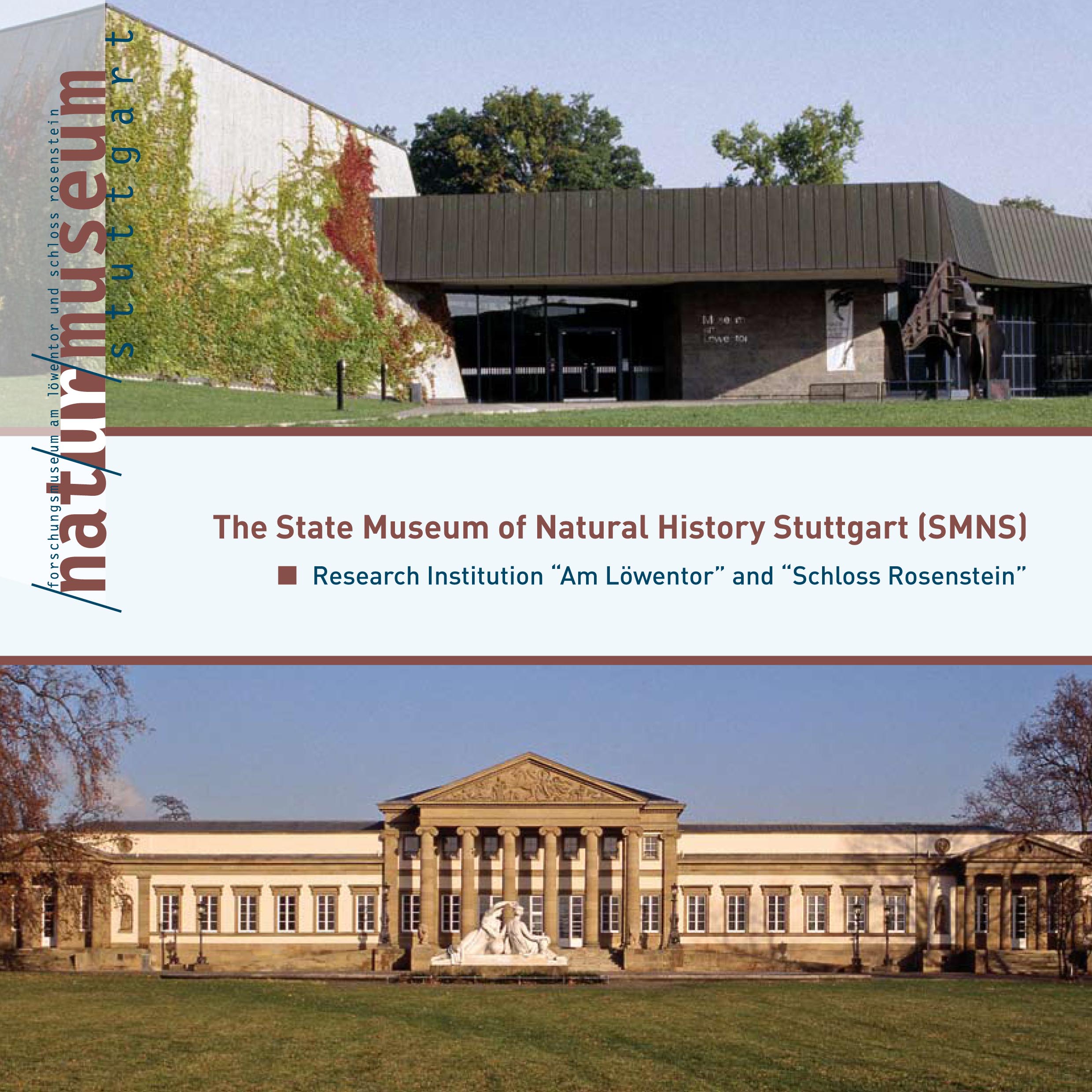
The State Museum of Natural History Stuttgart, is one of two of Baden-Württemberg's natural history museums. Exhibitions and collection items are shown in two buildings: the Museum am Löwentor houses the palaeontology and geology exhibitions, whilst the Schloss Rosenstein focuses on biology and other aspects of natural history.
The collections of the museum trace back to the Kunst – and Naturalienkabinett, a collection of art and curiosities of the dukes of Württemberg. The earliest still – preserved objects date back to the 16th – Century.
Every year, the SMNS is visited by c. 110,000 people.
The SMNS collection comprises of more than 11 million items, as well as associated data on taxonomy, genetics, ecology, and geography, including:
- 4.1 million fossils
- 40,000 minerals
- 1 million plants
- 4.5 million insects
- 1 million molluscs
- 500,000 vertebrates
- 9,600 type specimens
The biological and palaeontological collections are the basis of the Museum’s research, which is target – oriented. The Museum has particular foci on regional geology, flora and fauna, and on the conduction and documentation of globally oriented research projects. Scientists pursue research in earth history, botany, entomologyand zoology to unravel questions of the earth's biodiversity, with a focus on evolution, phylogeny, palaeobiogeography, palaeoecology, and stratigraphy.
The museum has special facilities for palaeontological preparation and other specialised methods (see services on offer, below).
Visitors have access to all SMNS collections: Palaeontology, incl. the amber collection, herbarium, entomological and zoological dry and wet collections; access to all lab facilities (molecular, amber, and preparatory labs for fossil material), access to all optical instruments (microscopes, Axioskop, and Keyence system with digital photography, Micro – CT, and digitisation facilities).
The museum has bespoke facilities for palaeontological preparation and modelling, etching, screen washing and sandblasting, the processing of amber fossils and cuticle analysis. Stereo, light, and scanning electron microscopes are also available, as are facilities for preparing large species and special laboratories for maceration and anatomical preparation.
A degreasing unit and a nitrogen chamber to kill off parasites, larvae, and eggs, are available in – house and for other institutions. The molecular systematics laboratory is equipped for semi – automated isolation and quantification of DNA and RNA, PCR, cloning, fingerprint methods like ISRRs, microsatellites, AFLPs, and phylogenetic analyses.
The Museum hosts 150 – 200 guest scientists a year, and data can be afforded on demand via the Museum’s database system, which contains data on more than 1 Mio. specimens and objects, including all of the Museum's type specimens.
The Museum’s library contains 100,000 volumes, 1,600 current, and publishes two scientific journals.
Dr. Joachim Holstein, joachim.holstein@smns-bw.de
Stuttgart, Germany
https://naturkundemuseum-bw.de/en/
Contact
Dr. Joachim Holstein, joachim.holstein@smns-bw.de
Stuttgart, Germany
https://naturkundemuseum-bw.de/en/